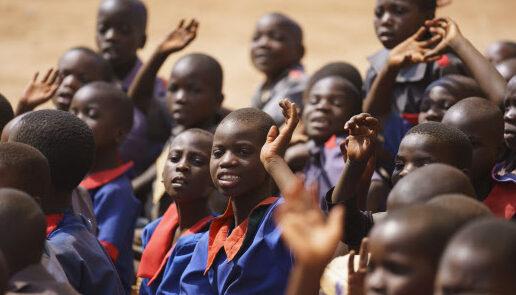Africa-Press – Lesotho. If we live with COVID-19 for a while, even the richest countries will need to find a way of protecting the worst-off: the urban poor, disconnected farmers, students and the vulnerable.
South Africa has been praised in recent days for its response to COVID-19, as its number of confirmed cases has reached just over 7,200.
The country has implemented strict but proportionate measures and is testing widely.
Other tourist destinations with imported cases like Egypt, Ghana and Morocco have also all registered thousands of cases, testing the robustness of their social systems.
These countries happen to belong to an elite group: the continent’s largest tax collectors relative to their population.
In turn, this loosely translates into higher social infrastructure spending, with for example South Africa’s domestic government health expenditure per capita leading the continent at US$576, compared with a global average of US$941.
With tax-to-GDP ratios and health expenditure per capita well below the African averages of around 17.2% and US$69 respectively, there’s only so much that short-term fixes can make up for.
This is because, beyond healthcare spending, the countries that are coping best during this ongoing crisis are those that have also effectively invested in education, student or social housing, rural electrification and internet infrastructure.
Africa’s richest countries may well be able to mount impressive emergency responses, but if we are to live with outbreaks of the virus for a while, as some scientists are suggesting, even these countries will have to find sustainable solutions to city slums, homeless students, disconnected farmers and schoolchildren at risk of being left behind by their global peers.
Many UK schoolchildren and German students skipped home when their institutions closed their doors only to find emails in their inboxes from tech-savvy teachers with a Zoom login and a full online schedule.
Over 120 million school-age African kids have no such luck.
Across most of Africa, even where social infrastructure is in place, governments are unable to operate and maintain such assets to provide the required quality of service due to lack of funding or poor technical capacity.
This is not for a lack of political will.
According to The World Bank, African government expenditure on education as a percentage of budgets in 2016 was 15.9%, above the global average of 14.6%, with countries such as Cote d’Ivoire, Ghana, Mozambique and Senegal exceeding the 20% mark.
However, the total amounts relative to population are insufficient, and much of the money that is allocated is swallowed by bloated recurrent expenditure.
While the urgent debate in the corridors of international and bilateral lenders is rightly focused on humanitarian support, debt relief and major stimulus packages, long-term success in this fight can only be achieved by investment in social infrastructure in Africa.
In the past ten years, development finance has found its way into some of Africa’s largest infrastructure, power and agribusiness projects.
But few impact investors have identified the opportunities abound in social infrastructure, whether it’s building humane prisons or connecting communities to the internet.
One example is the Private Investment Development Group (PIDG), which is financing affordable student housing, to be built by Acorn in Nairobi.
As we have seen most starkly in the USA, where students were rendered homeless by some universities, clean and safe accommodation for those in education is critical. Similarly, in the USA the Financial Times covered the debate as to whether its broadband network can be labelled essential infrastructure.
With 60% of Africans under the age of 25 and a slated population of 2.5 billion by 2050, it is not hard to see that access to the internet will be essential to social, economic and governance goals in Africa.
By looking at prospective social infrastructure projects, development finance professionals will find that they can gain exposure to long-dated, inflation-linked income streams, supported by binding contractual agreements.
Investors face the age-old risks associated with emerging economies, including weak regulatory frameworks and political interference, but these can be somewhat mitigated by employing a public-private partnership model.
The goal is, after all, not to step in to replace government, but to provide financial and technical assistance to the government in its role as the provider.
Indeed, African governments must continue to improve their investment climates and entice local capital, including pools of liquidity like pension funds, to be deployed into such domestic public works projects.
Governments and development actors can then play their part in protecting pensioners and investors from losses through existing financial mechanisms currently applied to other projects in Africa, such as guarantees or first-loss capital coverage.
For More News And Analysis About Lesotho Follow Africa-Press






